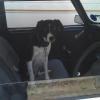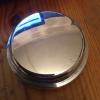Hi folks, I'm new to the forum and would be grateful for any assistance. I recently discovered a small leak from the cylinder head gasket in my 1979 Mini Clubman 1100. The cylinder head was removed and sent away for refurbishment, and at the same time converted to run on unleaded fuel.
The top of the engine block was cleaned up prior to reassembly with new gaskets and studs. Prior to reassembly I checked for any deformation of the top of the engine block. Following the settings within the Haynes manual I torqued the new head bolts. Within a space of approximately 10 seconds it became apparent that there was a water leak from the head gasket, just below the thermostat housing on the cylinder head. After switching off the engine and allowing it to cool I rechecked the bolt torque settings, and confirmed they were all set at 68Nm. After stripping everything down I then spotted a couple of holes in the new head gasket which did not appear to have a corresponding hole on the top of the engine block, which I suspect to be holes for the water jacket that may have become blocked. I'm not sure if this could be related to the water leaking from the head gasket, but if anyone has any advice then it would be greatly appreciated.
I've attached a couple of photographs with the suspected blocked holes indicated with arrows.  ir-IMGP1301.JPG 71.4K
28 downloads
ir-IMGP1301.JPG 71.4K
28 downloads ir-IMGP1303.JPG 65.36K
25 downloads
ir-IMGP1303.JPG 65.36K
25 downloads



















